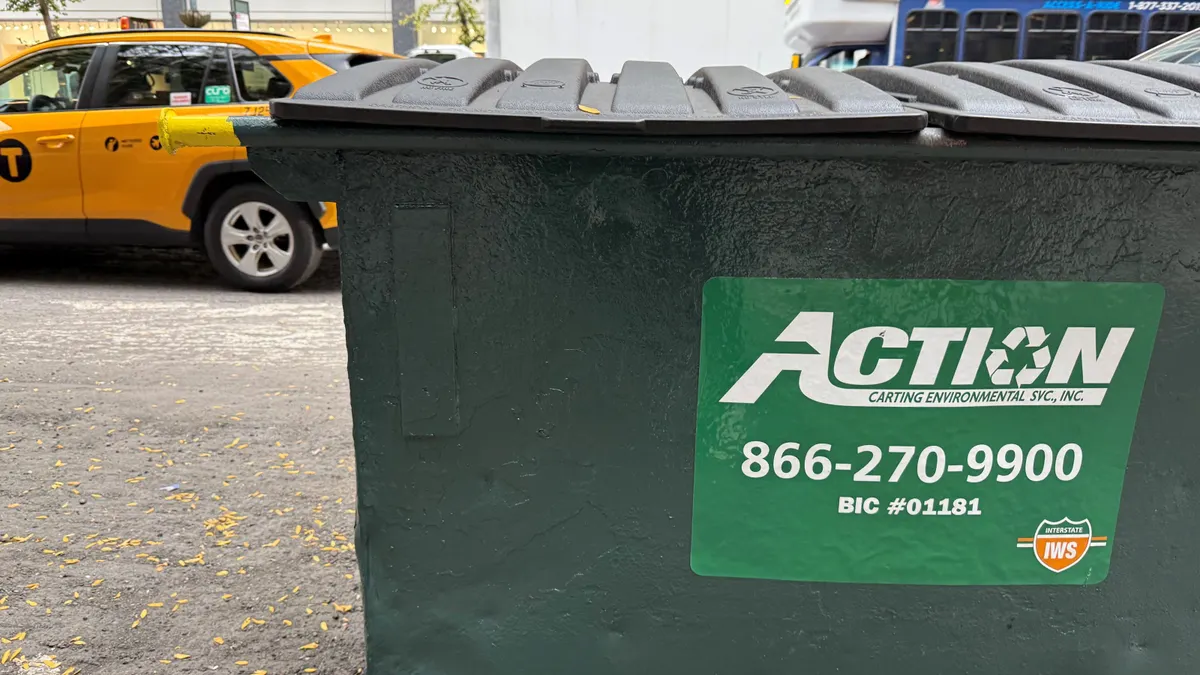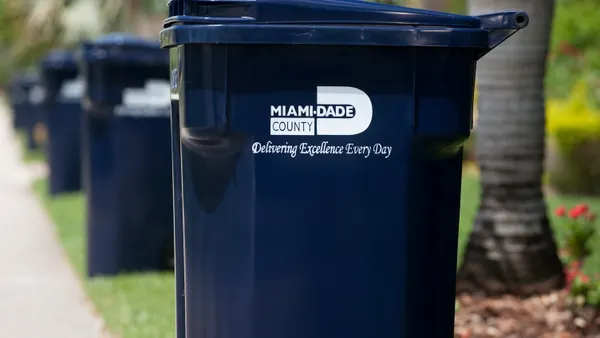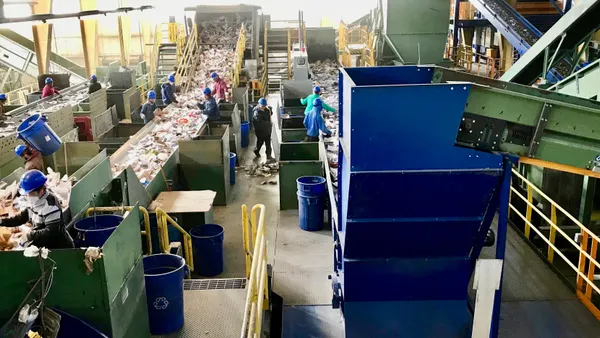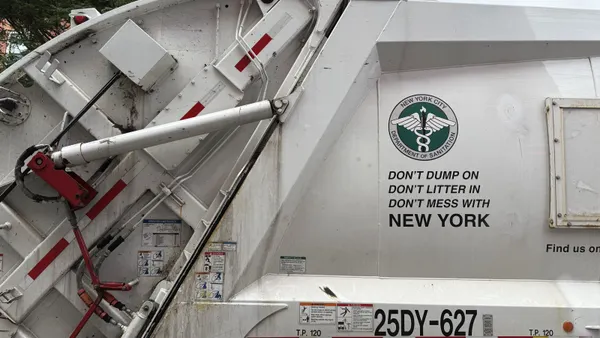Dive Brief:
- A new study published in Science Advances by a team from the University of California, Davis found that seabirds are attracted to plastic because of its smell, as reported by Plastics News.
- The team discovered this by placing mesh bags with polypropylene beads and varying densities of polyethylene in the ocean and tracking how they reacted to the conditions. Specific types of plastics were found to emit diamethyl sulphide (DMS) which the study says creates an "olfactory trap."
- DMS smells like decaying seaweed and is also emitted when plankton breaks down. Because birds use their sense of smell to find food they may mistakenly eat plastic because it smells the same.
Dive Insight:
Pictures of seabirds and other marine life eating plastic are commonly used to highlight how plastic debris are polluting the ocean. One study published last year found that 90% of seabirds have plastic in their stomachs as compared to 5% in 1960. With the amount of plastic in the ocean expected to increase, the authors of this study also recommended looking at whether other sea life reacts the same way to the material through smell.
This issue has gained near universal recognition, though those involved have very different opinions on how to solve it. On one end of the spectrum, plastics manufacturers who have made large financial commitments to solve the problem believe it's more about education and better waste management practices in developing areas of the world. Projects such as The Ocean Cleanup are working on ways to collect what's already out there, but some conservation groups say the real solution will be to stop making some of these plastic products in the first place.
Waste often attracts animals on land such as bears, squirrels, birds, or rats, but organic material is often the driving factor in most of those cases. That can cause sanitary issues and be bad for the animals depending on what they're eating, but it's usually not tricking them into eating something that can be potentially fatal.










